The necessary top dressing of grapes in the summer and the rules for its introduction
Many gardeners consider grapes a capricious and whimsical plant, and its cultivation is a laborious business. In fact, when certain rules are followed, growing grapes does not bring much trouble. How to care for the bushes, what and when to feed the grapes in the summer, we will consider in this article.
The content of the article
Features of summer grape dressing
In the summer, the grapes are in the stage of active growth and fruit formation, but at this time most of the nutrients from the soil, the roots have already been pulled out, so the vine needs high-quality feeding.
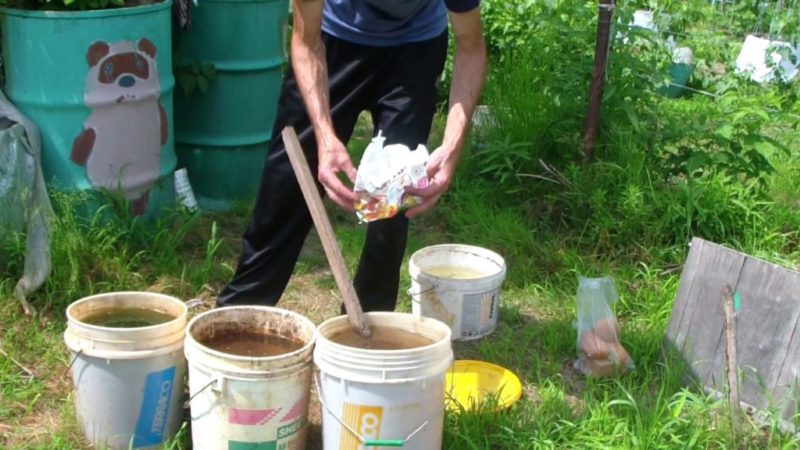
What does the plant need in the summer
To obtain a bountiful harvest of large and sweet berries, it is necessary to provide the grape bush with nutrients in full.
The full development of grapes is impossible without the following trace elements:
- phosphorus is necessary during the flowering period for the formation of ovaries;
- zinc has a beneficial effect on productivity;
- nitrogen is responsible for the formation of new shoots and leaves;
- copper helps to survive drought and frost;
- potassium accelerates the ripening of berries.
If grapes are grown on acidified soils, the amount of calcium in the dressing should be increased. If there is an excess of nitrogen in the soil, the potassium and phosphorus introduced earlier may not be absorbed in the proper volume.
How to determine a lack of substances
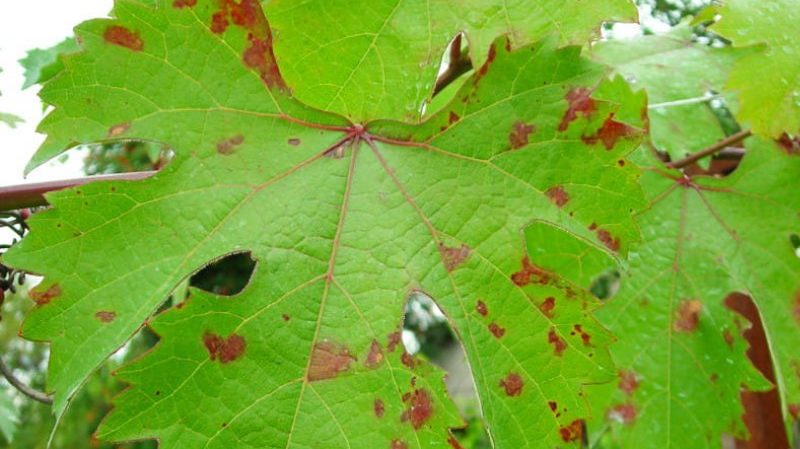
Experienced gardeners can easily determine the lack of minerals in the soil by the appearance and development of grapes:
- with a lack of nitrogen, there is a delay in the growth and development of shoots and bunches, their total number decreases;
- yellowing leaves that fold and fall off, dying off of growth points, especially in adult bushes, indicate a calcium deficiency;
- with a lack of iron on the grapes, chlorosis is observed, which also indicates a general violation of the mineral balance in the soil;
- darkened, curled or bent upward leaves, loose bunches, dropping berries signal a lack of phosphorus, as a result of which starch in greens does not turn into sugar;
- with a deficiency of magnesium, the leaves lose their green color, becoming light yellow, with dark spots between the veins;
- yellowing of foliage can also be caused by a lack of molybdenum, which is especially common in areas with acidic soil;
- on alkaline soils, a deficiency of manganese or boron is often observed - feeding in this case is usually carried out with 2 elements at the same time.
An excess of nitrogen can be just as harmful as a lack of it, as it leads to overgrowth of the bush. At the same time, the taste of berries decreases, nitrates accumulate, and the indicators of resistance to adverse environmental influences deteriorate.
How to feed grapes in summer
To get a good harvest, grapes must be fed from an early spring before autumn... In summer, it is recommended to apply both mineral and organic fertilizers, which will favorably affect the growth and development of berries, their quantity and taste.
Mineral fertilizers
Fertilize grapes with mineral dressing necessary at different times depending on the microelements. So, nitrogen fertilizers are recommended to be applied regularly throughout the summer, phosphorus - twice a year: before flowering and immediately after the formation of the ovary.
Potassium is added 2 weeks before harvest, when, due to depletion of the soil, the need for it for the normal development of the bush increases.
Fertilizers need to be applied to the depth of the suction roots, since microelements practically do not move in the soil layers on their own.
Important! Despite the popularity of urea as a nitrogen fertilizer for grapes, it must be remembered that it raises the pH of the soil, so it is better not to use it on alkaline and acidic soils.
Organic fertilizers
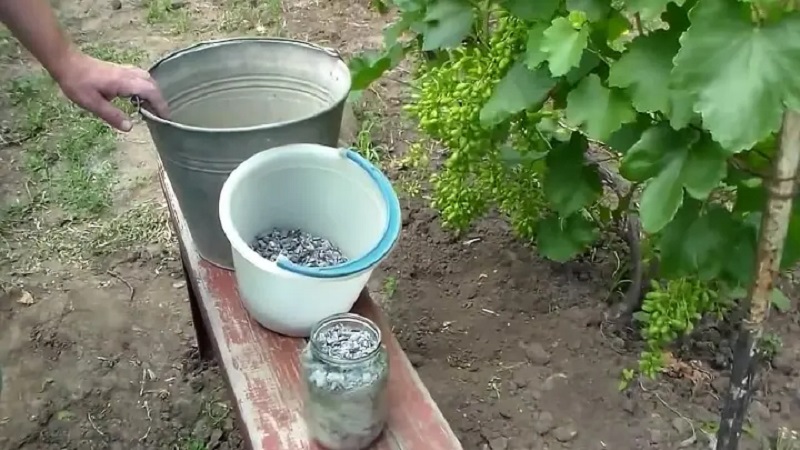
Manure from cattle and horses is considered optimal for feeding grapes. It not only provides the bush with all the necessary nutrients, but also has a beneficial effect on the soil, promotes the aeration process, and makes it looser.
Experienced gardeners prefer organic fertilizing of grapes, among which the leading position is occupied by sunflower ash, which contains 40% potassium and 4% phosphorus. The fertilizing solution is prepared from 1 liter of ash cans per 5 liters of water. The resulting mixture is infused for a day, stirring regularly. Before feeding, the mixture is diluted with 5-6 liters of water.
During the ripening period of berries, you can feed the grapes with a mixture ash (1 tbsp.) And superphosphate (50 g), filled with 10 liters of water. Watering the root zone of the bushes.
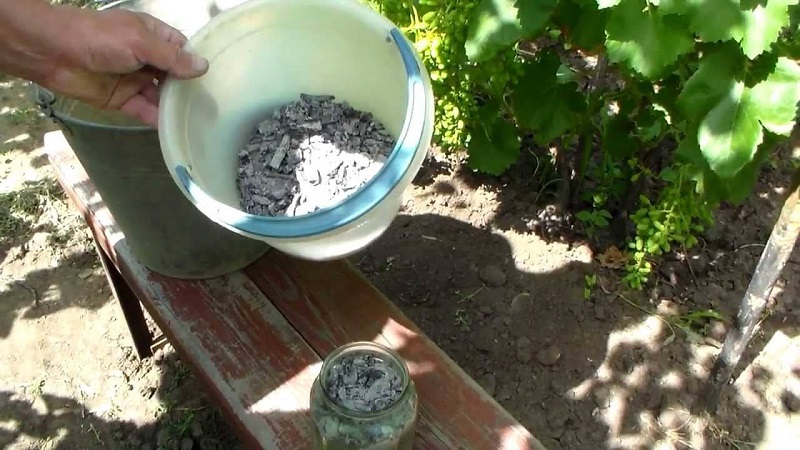
Important! Ash not only provides the grapes with the necessary substances, but also protects the plant from pests.
Folk remedies
Great popularity for feeding grapes uses a liquid infusion of chicken manure. 1 liter can of dry droppings is poured with 5 liters of water for 10 days. The resulting mixture is diluted with water before use (1 liter of solution per 10 liters of water).
Summer vine bushes watered with a solution of humus or rotted compost. Watering should be done around the bush, at a distance of 30 cm from the root.
Important! Grapes respond better to organic fertilizing, since the nutrients from them are absorbed by the roots of the plant, and not by the surrounding soil.
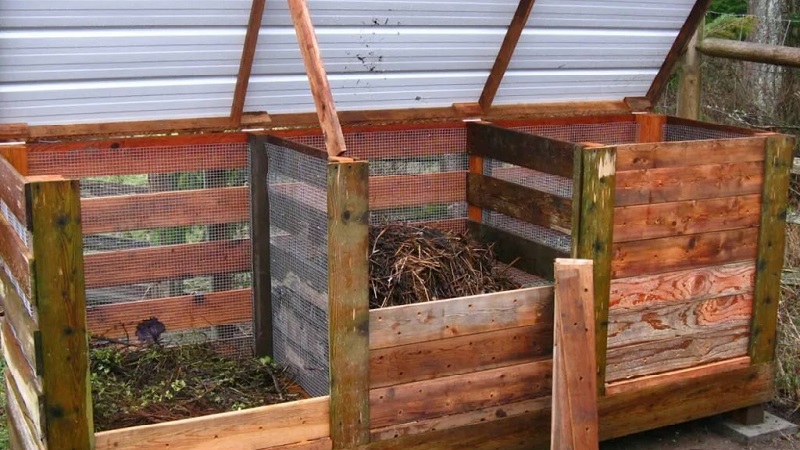
Frequency and volume of dressings
A lack of nutrients for a plant can be as damaging as an excess. That is why it is necessary to adhere to certain schemes, observing the frequency and volume of nutrients.
Possible fertilization schemes
There are several basic schemes for watering grapes and fertilizing in the summer. Usually 3-4 procedures are carried out, combined with watering.
Like how to feed grapes:
- 20 kg of manure, 200-250 g of urea, superphosphate, potassium chloride, 300 g of ash are introduced into a shallow (up to 7 cm) furrow, after which the soil is watered with 30 liters of barrel water.
- Re-feeding is carried out in mid-June, when the ovaries begin to form.
- The third top dressing is carried out simultaneously with watering at the end of July, but in this case, urea is no longer used, and the amount of organic fertilizers is reduced by three times.
There is another scheme for fertilizing grapes, combined with watering.
It is based on the phases of plant development:
- After a dry garter, watering is carried out and at the same time fertilizing with nitrate at the rate of 60-80 g per bush.
- During the growth of shoots - watering and feeding with ammophos at the rate of 60 g per bush.
- Before flowering, the bushes are watered and foliar fertilized with 0.1% boric acid solution.
- During the ripening of the berries, 200 ml of superphosphate, potassium sulfate, ash are added, after which watering is carried out.
How to properly feed grapes
Depending on the fertilizers applied and the phase of plant development, the required type of feeding the grapes is selected.
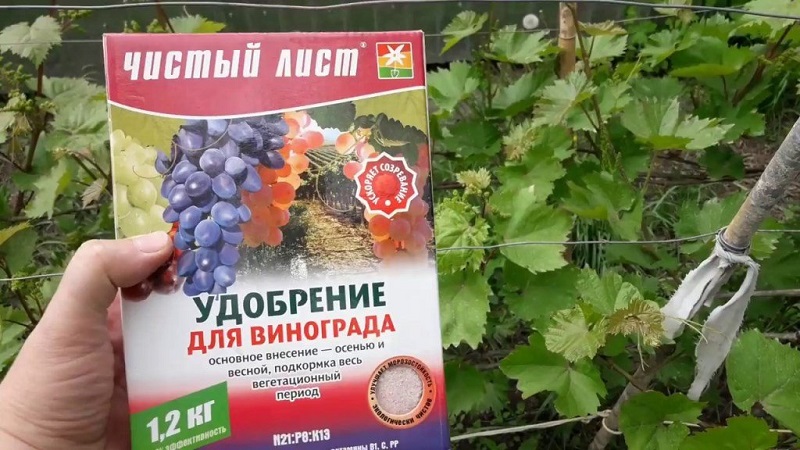
Fertilization methods
There are root and foliar feeding methods for grapes.In the first case, it is recommended to install drainage pipes or an underground drip irrigation system, through which minerals are delivered to the roots of the plant. If this is not possible, it is necessary to dig a narrow furrow 25-30 cm deep at a distance of 50-60 cm around the bush and apply fertilizer there.
Important! Root feeding gives the maximum effect if carried out simultaneously with watering.
Foliar dressing is also effective because grape leaves are highly nutrient-absorbing. In combination with root fertilization, foliar dressing gives excellent results.
It is recommended to spray the leaves on cloudy, calm days. So the solution will not evaporate in the first minutes, but will be absorbed by the plant tissues. When spraying, make sure that all the leaves are evenly covered with small drops of solution.
Instructions for each method
When carrying out root feeding, the following scheme is followed:
- During the period of swelling of the kidneys, dissolve in separate containers with water 90 g of urea, 60 g of superphosphate and 30 g of potassium sulfate, mix the solutions and bring the volume of liquid to 40 liters. Mineral nitrogen fertilizers can be replaced with a 10% mullein solution or 5% bird droppings diluted in a bucket of water.
- Before flowering, the same substances are added, but now 120 g of ammonium nitrate, 160 g of superphosphate and 80 g of potassium sulfate are used.
- The third top dressing is necessary only in regions with a short summer, it accelerates the ripening of berries and prepares the bush for a successful winter. For one bush, prepare a mixture of 60 g of superphosphate, 30 g of potassium sulfate and a solution of trace elements ("Aquarin", "Plantafol", etc.) according to the instructions.
According to another scheme, 4 root dressings are carried out per season:
- The first of them is carried out at the very beginning of spring, introducing a solution of 10 liters of water, 20 g of superphosphate, 10 g of ammonium nitrate and 5 g of potassium salt under the roots of one plant.
- The procedure is repeated 2 weeks before the flowering of the bushes.
- After fruit set, the grapes are fed for the third time using potash and phosphorus fertilizers without nitrogen.
- During the harvest, the fourth feeding with potash preparations is performed, thanks to which the plant will better endure the coming cold weather.
In the case of feeding with liquid manure, it must be used at the rate of 1 kg per 1 sq. m.
For foliar dressing of grapes, the following processing scheme has been developed:
- Before flowering, the bushes are sprayed with a solution prepared from 40 g of urea, 100 g of superphosphate, 50 g of potassium sulfate and 5 g of boric acid. As with root feeding, each element is separately diluted with water, then the solutions are mixed together and the volume of liquid is brought to 10 liters. The bushes are sprayed after filtering the resulting solution.
- The second feeding is carried out with a similar solution immediately after flowering. It will not be superfluous to add a ready-made solution of trace elements, prepared according to the instructions.
- When the berries begin to ripen, a third feeding is made with a mixture of 100 g of superphosphate and 50 g of potassium sulfate, dissolved in 10 liters of water.
- The fourth feeding is carried out with natural ingredients, since they are produced directly from the berries. These substances also serve as protection against pests and diseases for the plant. Infusions of wood ash, solutions of potassium permanganate or iodine, diluted serum, fermented infusion of herbs with the addition of ash dissolved in water are widely used.
For better absorption, it is recommended to add 3 tbsp to the composition for the foliar subcortex. l. Sahara.
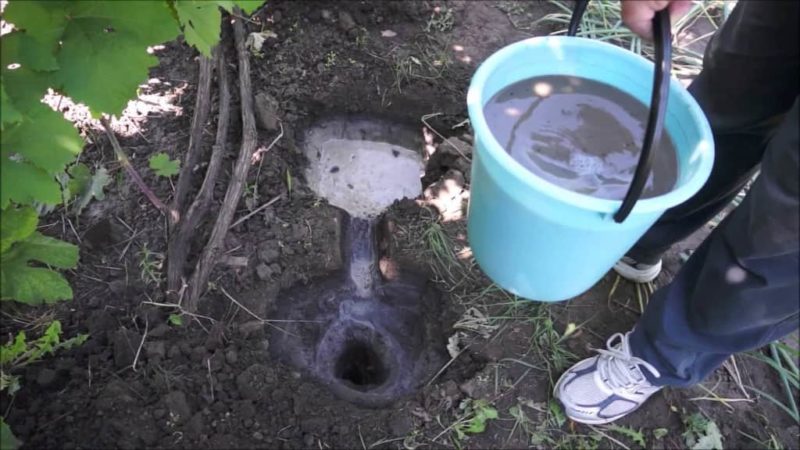
Mistakes to Avoid
Among the most common mistakes in growing and feeding grapes are the following:
- Distribution of fertilizers on the soil surface. Such actions do not bring the expected result, since nitrogen evaporates quickly, and potassium and phosphorus do not fall into the deep layers to the roots of the plant.
- Excessive fertilization.Contrary to expectations, this leads to a decrease in plant immunity, as a result of which the harvest is postponed to a later date.
- Top dressing only young grape bushes. If the planting was done correctly, and a sufficient amount of nutrients were laid in the hole, the plant can not be fed for the next 2 years. But for abundant fruiting of adult bushes, it is necessary to carry out procedures throughout the season.
Tips from experienced winegrowers
Experienced gardeners prefer to carry out foliar dressing, since in this case the absorption of nutrients is almost double that of the root. This allows you to reduce the amount of fertilizers used, and also increases the speed of all physiological processes in the plant.
At the end of September, all weeds around the bush are removed and rotted manure or compost is added under its base. The bacteria contained in it process part of the organic matter, so that the plant needs less fertilization in the future.
It is necessary to regularly process the root system of the plant with manure with ash, ammonium sulfate and superphosphate.
On sandy soil, such processing is carried out annually, on sandy loam - once every 2 years, on other types of soils - once every 3 years.
Conclusion
The opinion about the difficulty of growing grapes for a good harvest is wrong. In fact, it is an unpretentious culture that can grow even in the wrong conditions.
If you follow the feeding scheme, even a beginner can get a bountiful harvest of ripe, juicy berries.